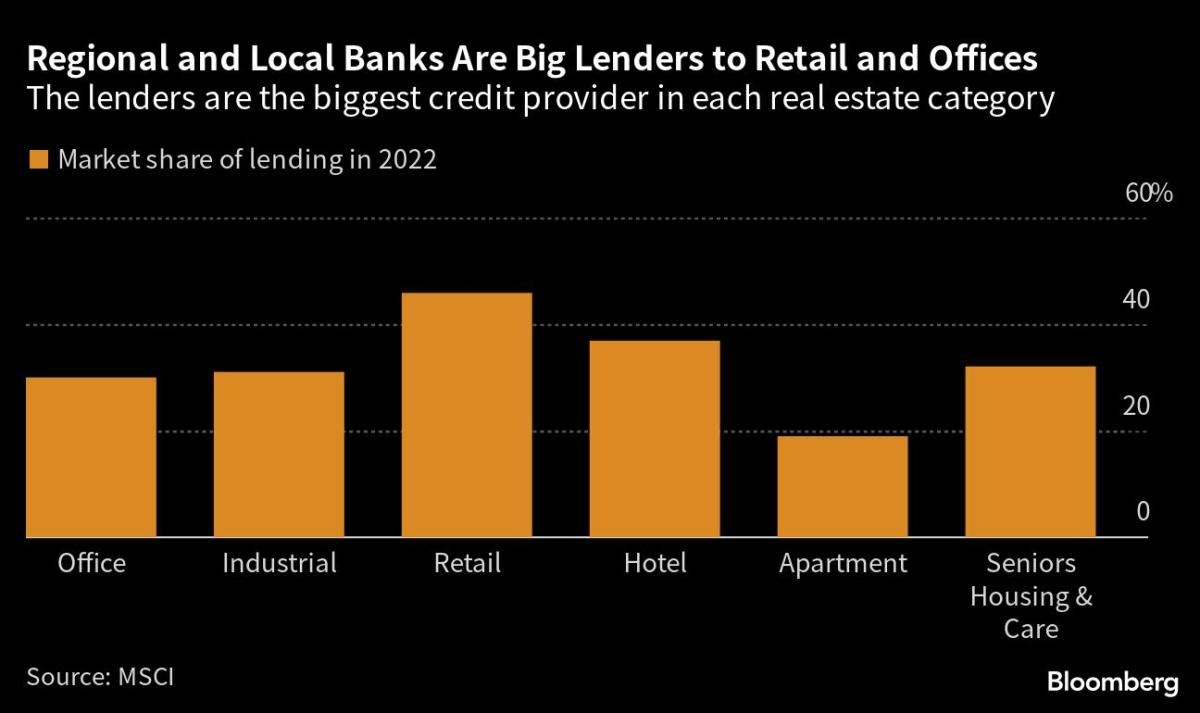Housing market data in recent weeks has offered some signs of stabilization as the spring selling season begins to ramp up.
Mortgage rates are on the downswing, with the average 30-year fixed mortgage dipping to 6.28% from 6.32% the week prior, according to Freddie Mac. This marked the fourth straight weekly drop as the bank crisis that began four weeks ago has pressured Treasury rates.
The slide in rates also comes as the Federal Reserve raised interest rates by a quarter point in March as it continues its aggressive campaign to cool rapid inflation.
The yield on the 10-year Treasury note, which is closely tracked by the average 30-year mortgage rate, stood at 3.41% at the end of the week, down from 4% at the beginning of March.
“While access to commercial mortgage loans could become increasingly difficult, residential mortgage loans are expected to be more readily available,” National Association of Realtors Chief Economist Lawrence Yun said in a press release.
Mortgage applications fell 4.1% during the week ending March 31, according to the latest data from the Mortgage Bankers Association out last week.
Before this drop mortgage applications had risen for four straight weeks.
“Mortgage rates no longer are rising, but they likely will remain elevated for some time,” Ian Shepherdson, chief economist at Pantheon Macroeconomics, wrote in a recent note to clients. “That leaves [home] prices to do the heavy lifting if affordability is to improve; prices have fallen by about 5% since the summer, but we look for a further 15% decline over the next year, restoring the pre-Covid price-to-income ratio.”
Here’s a roundup of where major housing data stands through the first few months of 2023.
Pending Home Sales
Signed contracts to buy existing homes in the U.S. rose in February, the third-straight monthly increase, according to data released March 29 by the National Association of Realtors.
Contract signings increased in all regions of the country except for the West. Pending sales jumped 6.5% from last month in the Northeast, notched a 0.4% gain in the Midwest, and a 0.7% increase in the South; out West pending home sales fell 2.4%.
“The affordable U.S. regions — the Midwest and South — are leading the recovery,” Yun said.
Home Builder Sentiment
Confidence among U.S. home builders rose slightly in March, the third-straight month builders have increased their optimism about the U.S. housing market.
The National Association of Home Builders/Wells Fargo’s index of builder sentiment increased 2 points to 44, figures released March 15 showed. Analysts had expected this index to come in at a reading of 40.
“Even as builders continue to deal with stubbornly high construction costs and material supply chain disruptions, they continue to report strong pent-up demand as buyers are waiting for interest rates to drop and turning more to the new home market due to a shortage of existing inventory,” NAHB Chairman Alicia Huey, a custom home builder and developer from Birmingham, Ala, wrote in the press release.
Housing Starts
Housing starts rose 9.8% in February to an annualized rate of 1.45 million homes, the strongest pace of starts since last September, the Commerce Department said March 16.
Housing starts for single family homes advanced 1.1% to an annualized rate of 830,000, while multi-family housing starts surged 24% to a rate of 608,000. Starts grew in all regions except the Northeast in February.
Existing Home Sales
Existing home sales in February jumped 14.5% to an annualized rate of 4.58 million, the largest monthly percentage increase since July 2020, data from the National Association of Realtors out March 21 showed. This increase also marked the end of a 12-month slide.
The annualized rate of existing homes sold topped the 4.2 million expected by economists, according to Bloomberg data. The median sales price for an existing home slid 0.2% to $363,000, compared to a year ago, NAR data showed.
“We’re seeing stronger sales gains in areas where home prices are decreasing and the local economies are adding jobs,” Yun said.
About 57% of homes sold in February were on the market for less than a month.
New Home Sales
New single-family home sales rose 1.1% in February to an annualized pace of 640,000, up from January’s rate of 633,000 according to a report from the Census Bureau released March 23. This figure was 19% below the pace seen a year ago.
The median sales price of a new home in February stood at $438,200, while the average sales price reached $498,700.
At the end of the month, there was a seasonally-adjusted estimate of 436,000 new homes for sale in the market, representing about 8 months of supply at the current sales rate.
Zillow Senior Economist Orphe Divounguy wrote in a statement that low inventory suggested “builders still likely face challenges in completing units while buyer demand has also ticked up.”
Case-Shiller Home Prices
The S&P CoreLogic Case-Shiller U.S. National Home Price index fell 0.5% in January compared to the previous month, according to data released on March 28. On a yearly basis, the index climbed 3.8% in January, down from 5.6% in the previous month.
The report’s 20-City Composite index, which tracks prices in the 20 largest metros, showed prices fell 0.6% over the prior month in January and rose just 2.5% over last year. All 20 cities reported lower prices in the year ending January 2023 versus the year ending December 2022, the report said.
Dani Romero is a reporter for Yahoo Finance. Follow her on Twitter @daniromerotv
Read the latest financial and business news from Yahoo Finance







